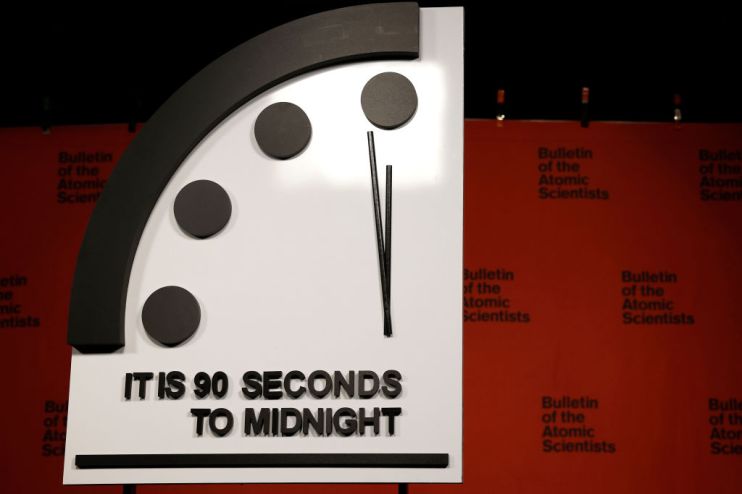Explainer-in-brief: The Doomsday Clock is the closest it’s ever been to midnight – but what does this mean?

The Doomsday Clock has been kept at 90 seconds to midnight for the second year in a row, apocalypse timekeepers the Bulletin of the Atomic Scientists announced yesterday.
The Doomsday Clock looks to warn the public about “how close we are to destroying our world with dangerous technologies of our own making,” in the words of the Bulletin, who reassess the time every January. The current time represents the closest the clock has ever been to striking 12, with midnight symbolising global catastrophe.
The group said this year’s time reflected the “unprecedented level of danger” faced by humanity and emphasised the time staying the same did not signal stability. “Leaders and citizens around the world should take this statement as a stark warning and respond urgently, as if today were the most dangerous moment in modern history. Because it may well be,” the group said in its annual statement.
Nuclear threat, AI, the climate crisis and wars in Ukraine and Gaza were all cited as reasons for the current threat level.
The clock was set up by the Bulletin of the Atomic Scientists in 1947, whose founding members included Albert Einstein as well as researchers who had participated in the Manhattan Project. The project aimed to highlight the threat of nuclear war after the atomic bombings of Hiroshima and Nagasaki, with the clock appearing on the front page of every issue of the group’s magazine.
The clock’s time was originally set single-handedly by the Bulletin’s editor, but now is decided by a board of scientists and experts, who meet twice a year to discuss world events.
The time on the Doomsday Clock was initially set to seven minutes to midnight, with the minute time having been reset 25 times since. The hands were set furthest from midnight in 1991, when the US and Soviet Union’s signing of the Strategic Arms Reduction Treaty pushed the time back to 17 minutes to 12.